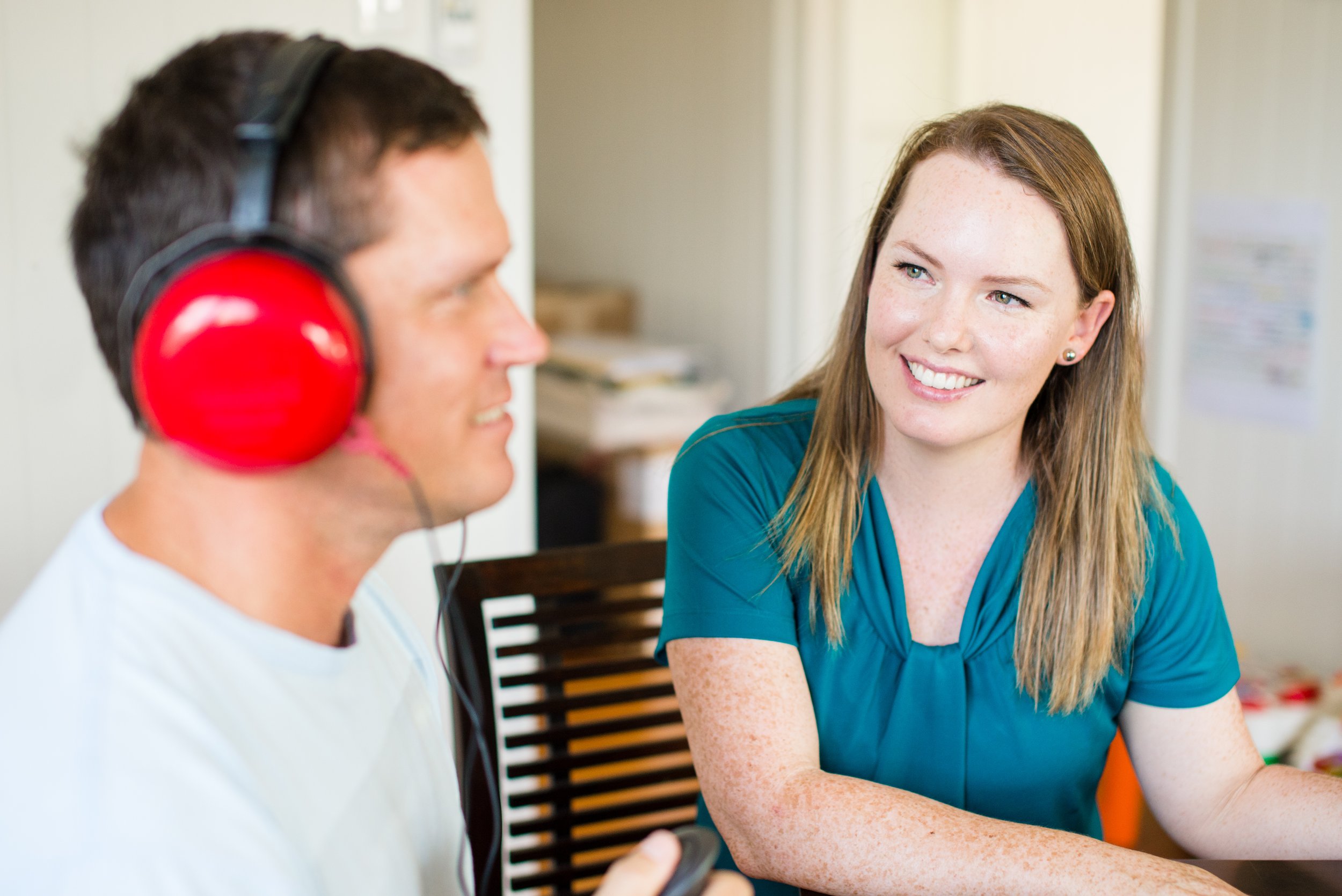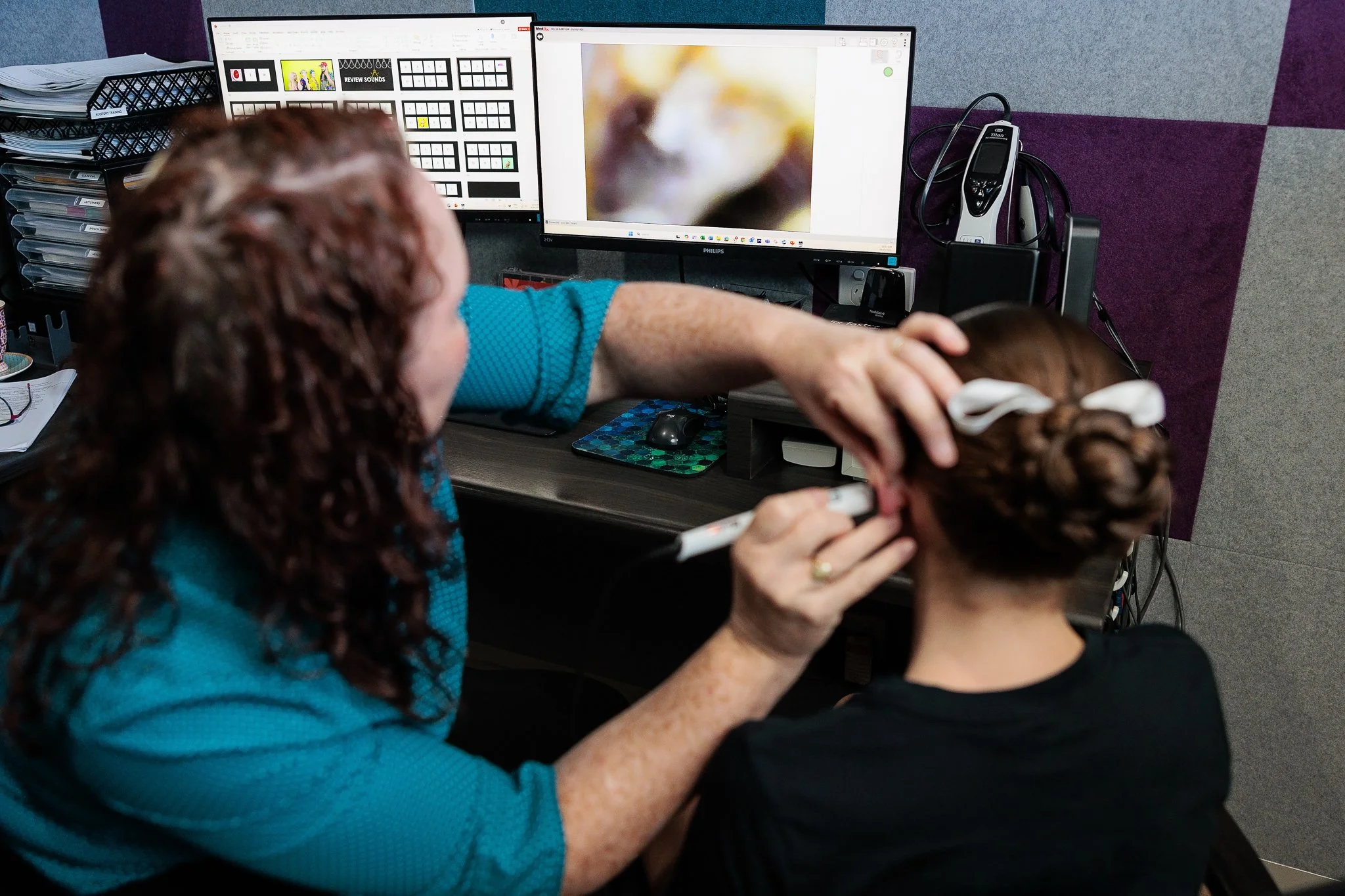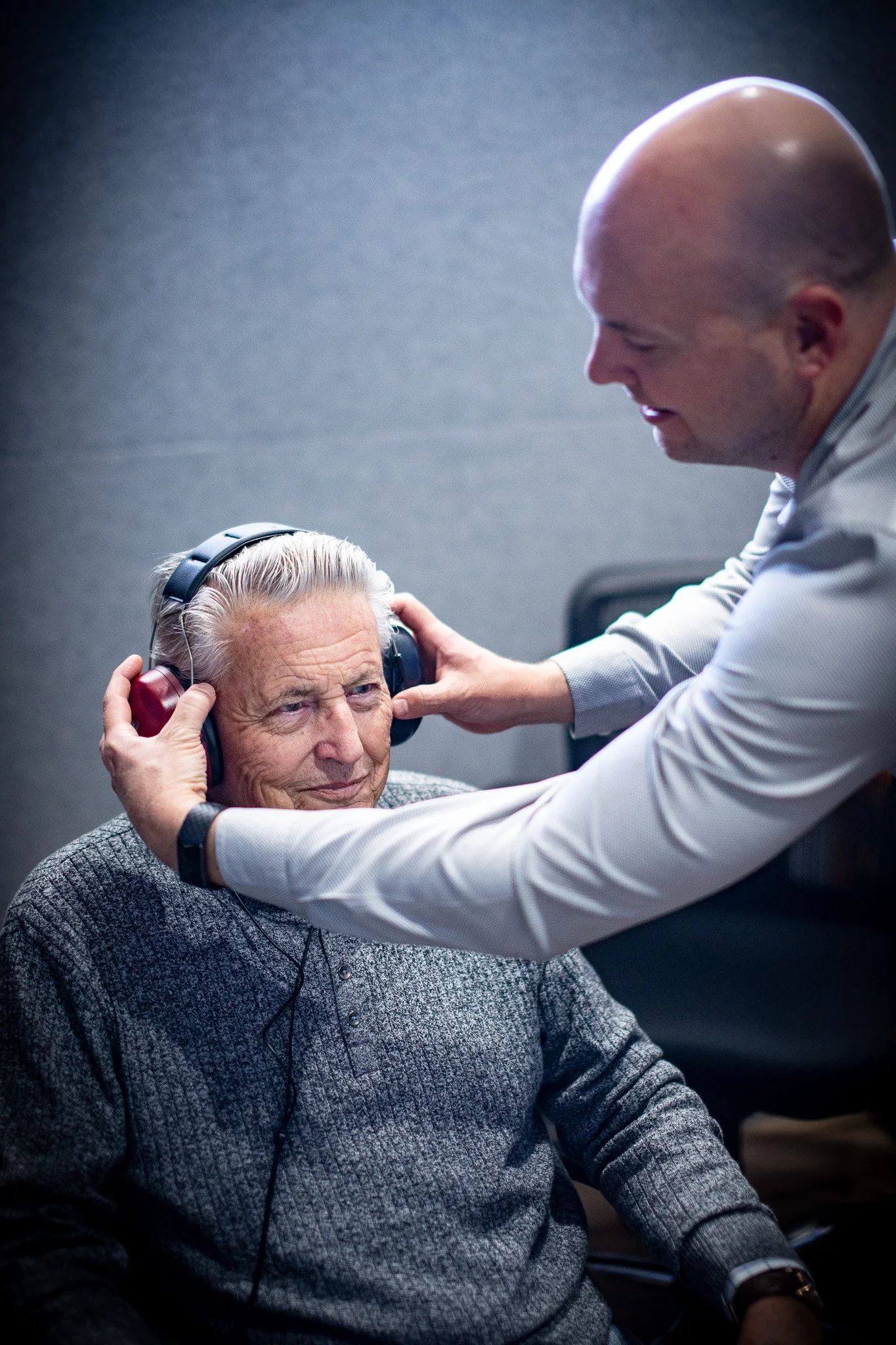
Hearing Tests
Hearing concerns or not, let's chat!
If you or a loved one is experiencing any signs and consequences of hearing loss, please consider booking a comprehensive diagnostic hearing assessment. Regular hearing tests are crucial for maintaining your overall hearing health. Early detection of hearing loss allows for more effective treatment and can prevent further deterioration.
Hearing assessments are also recommended for people with no hearing loss symptoms – it’s an excellent idea to get some baseline results on file for future monitoring, and you might have hearing loss and not know it. The sooner you address hearing loss, the better the outcome you are likely to have and the less impacts you are likely to experience.
At Mackay Hearing, we understand you may feel nervous about having your hearing tested, which is why we like to make sure you know what to expect. The testing process is completed in a 1-hour appointment and the process is completed in 3 easy steps.
History
Discussing your hearing concerns, medical history, occupation history, recreational activities and hearing goals, is an important part of the hearing assessment appointment. It allows our clinicians to start developing a picture of your history, concerns, needs and values. Plus, we like to get to know you!
To do this we will go over your hearing and ear health history, discuss how hearing loss is impacting your everyday life, and discuss the results from your hearing and/or tinnitus questionnaires. It is often helpful to bring a companion to participate in this discussion as hearing loss affects those close to our clients as well.
Diagnostic Assessment
Our clinicians perform a series of tests to assess your hearing abilities.
Otoscopy – We take time inspecting your outer ears and ear canals using an otoscope to see if there are any visible problems, like an ear infection, perforated ear drum or wax blockage that could affect your ability to hear. We are also able to perform video otoscopy so you can see inside of your own ears. If wax is an issue at this point, we can remove it (link to Services – services ear wax removal page).
Tympanometry – Next, we start testing the pressure in your ears and how well your eardrum is moving. We pump a little air into your ear canal to test the movement and flexibility of your middle ear. This test is important in determining why there is a problem with your hearing.
Otoacoustic Emissions Testing – This test is an objective measure of the responsiveness of the hearing hair cells in your cochlea. It is usually completed at the same time as Tympanometry while the probe tip is still in your ear. You will hear soft clicking sounds at different pitches, while the microphone in the probe tip measures the echoes in your ear canal, indicating a response from your inner ear. Without you responding, this test is able to show if your hearing is worse than a mild hearing loss.
Air Conduction Testing – This test will take place in a soundproof booth or room. With headphones over or insert earphones in your ears, we play sounds at different volumes and pitches while you press a button each time you hear the sound. This begins to identify any potential issues with the conduction of sound through to the inner ear and results are recorded on a graph.
Bone Conduction Testing – We place a small vibrating device (bone oscilator) on the bone behind your ear (mastoid bone) and ask you to press the button each time you hear the sound again. The sound is sent directly through your skull to your inner ear by way of vibrations, bypassing your outer and middle ear, to determine the bone conduction thresholds. Information from bone conduction testing indicates the location of where your hearing issue is coming from.
Speech in Quiet Testing – This test involves repeating recorded words that you will hear at different volume levels. They will be presented in a group of 10 words and the levels may be loud, soft or comfortable. This information is used to determine how you would be expected to perform with hearing aids.
Speech in Noise Testing – The Quick-SIN test is used to identify how well you are able to hear speech above the level of background noise. You will hear sentences in different levels of noise and will be asked to repeat whatever words you hear in the sentence.
Discuss Results and Recommend Treatment Plan
After the results are discussed, we will chat about potential hearing treatment options. This may involve hearing aids or other hearing devices, auditory training, hearing strategies or a combination of these. Our clinicians will provide all relevant information so you can make an informed decision on your preferred course of action.
Our clinicians take the time to make sure you understand your test results and treatment options, that your expectations are realistic and clear and, if necessary, we can discuss more specific hearing health issues you may have, such as tinnitus or hyperacusis (sensitivity to sound).
Choosing the right device
If the hearing assessment results indicate that you are a hearing aid candidate, and you are keen to give it a go, our clinicians will explain the range of devices available.
It is likely there will be a range of potentially workable hearing aid options available to you. However, there will probably be a shortlist of devices offering the best possible outcome, based on the type and degree of your hearing loss, ear size and shape, lifestyle, budget and aesthetic preferences.
We’ll talk you through the advantages and disadvantages of suitable options, giving you all the relevant information required to make an informed decision
All of your test results will be discussed with you in detail, in a way that is easy for you to understand. The results will indicate:
whether you have a hearing loss
the ‘shape’ of the hearing loss (ie. if it affects a particular pitch only or is more ‘across the board’)
the severity of the hearing loss
the part of the auditory system that is damaged
whether the hearing nerve and neurological pathways are functioning well enough to enable speech sounds to be heard clearly
whether hearing aids are likely to provide benefit
whether other medical practitioners of any issues potentially requiring medical management (further investigation and treatment)
Hearing Aid Trial Experience
At Mackay Hearing, we encourage you to trial hearing aids if you are unsure if you would benefit from them. You can personally trial and experience the benefits of hearing aids in your own home and day-to-day listening environments over a 2-week period.







